-
Posts
780 -
Joined
-
Last visited
Content Type
Profiles
Forums
Gallery
Events
Posts posted by woodrat
-
-
Hull framing nears completion with all frames trenailed to shell. The decks will be next. I plan to have a central cargo area which could transport horses if required.
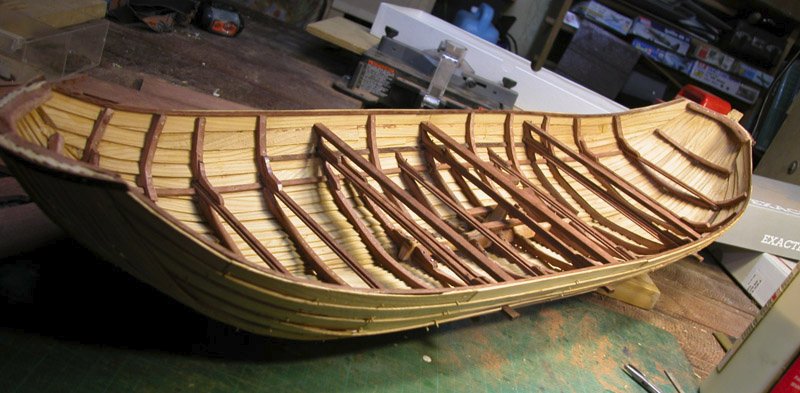
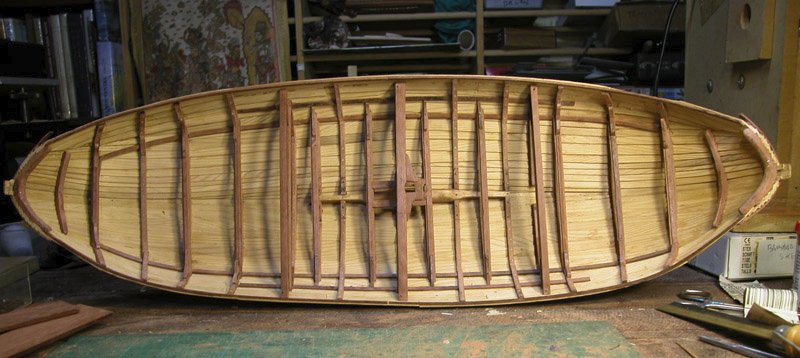
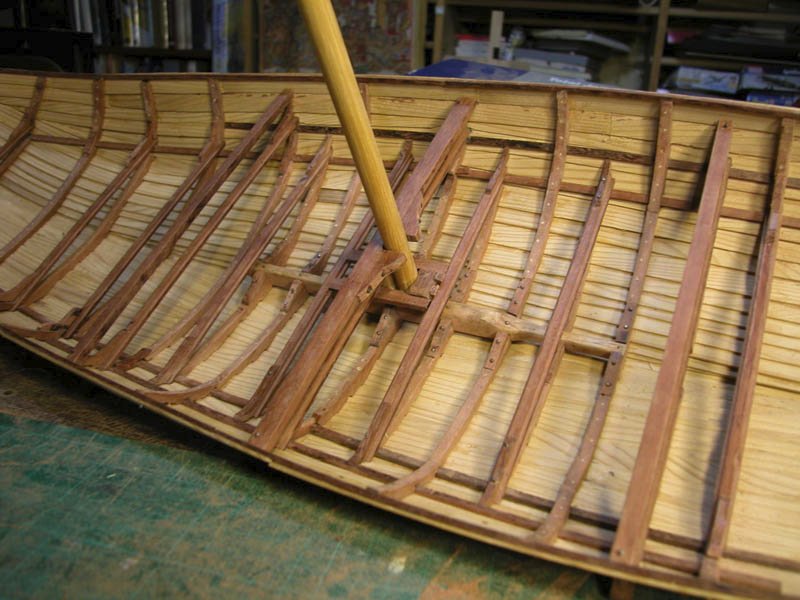
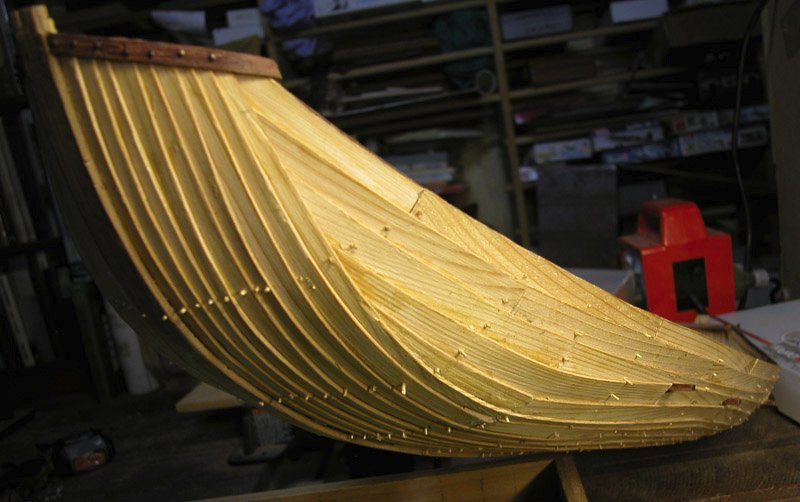
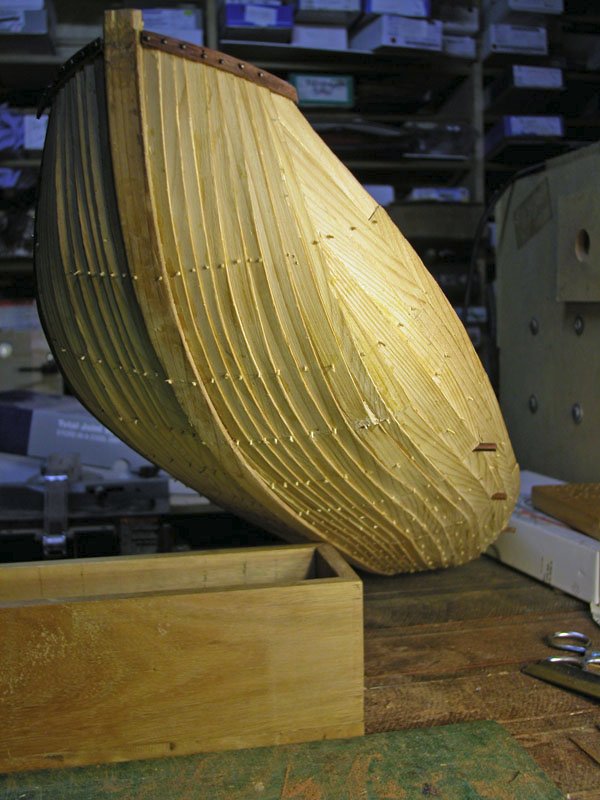
The scandinavian influence is obvious but the barge-like shape of the hull would increase cargo carrying capacity. The reverse-clinker leads to an increased resistance to leeway which makes it less necessary to have a deep keel. The side rudder however will need to be wide and deep in the water to add more lateral resistance. Also note that the reverse clinker creates a channel in the midline beneath the keelson where water can pool. There is no need then for limber holes in the frames and less likelihood of rot. Evacuation of water is simply done either by bailing or a log pump. I think I will install the latter.There is plenty of room beneath the keelson for water to move side to side as well as end to end. As there seem to be so many advantages to reverse clinker, I would be surprised if the clever shipwrights of the time did not at least try it.
Cheers
Dick
-
As there seems to be some discussion around nordic mast-steps, here is my take on it. The mast foot is introduced into the step slot at an angle then raised upright between the guides. The lower part of the mast abuts the vertical branch of the keelson. A rectangular timber is inserted behind the mast and wedged in place to hold and lock the mast . The mast is then lashed to the upper beam.
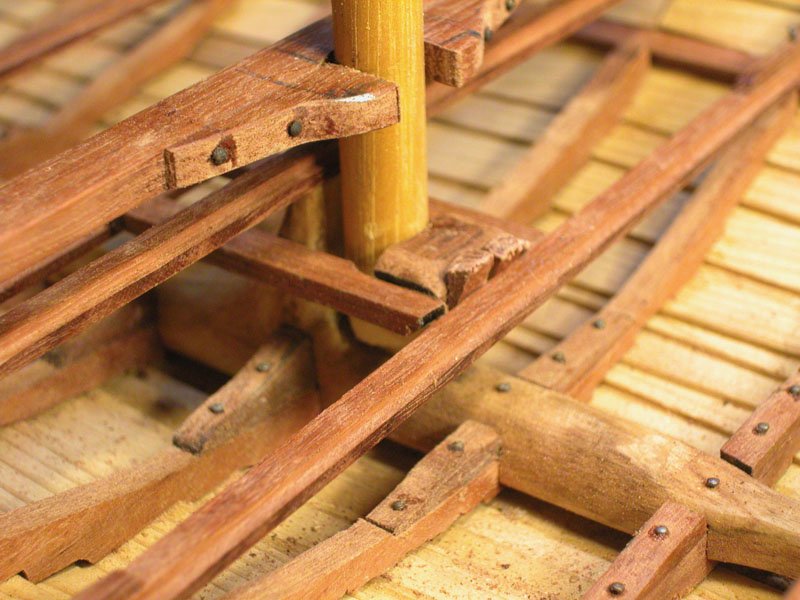
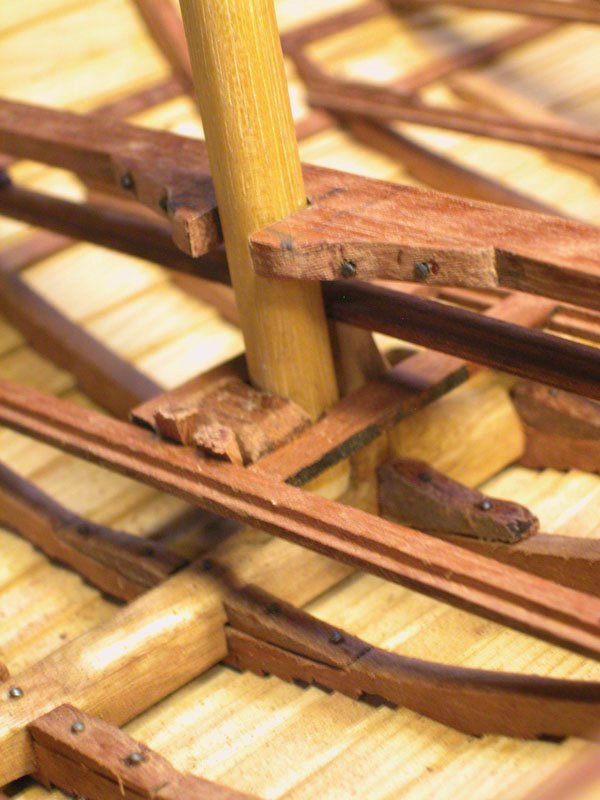
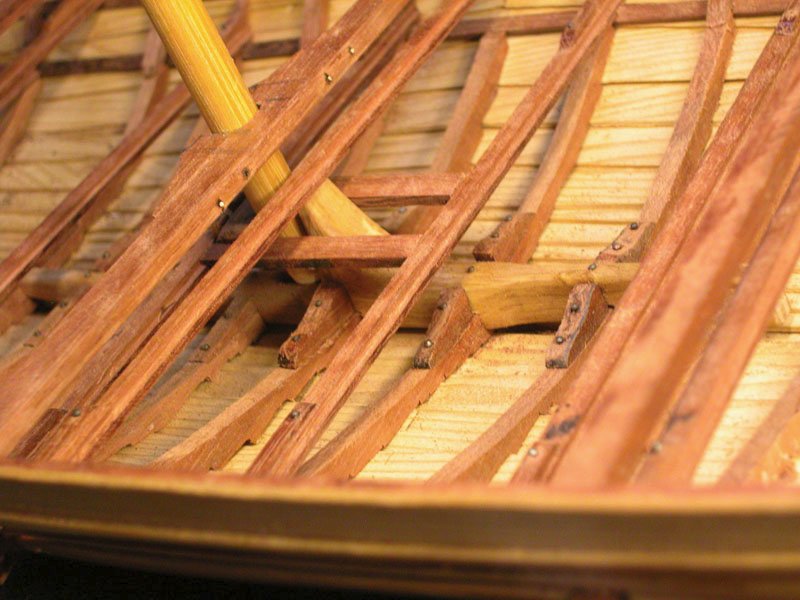
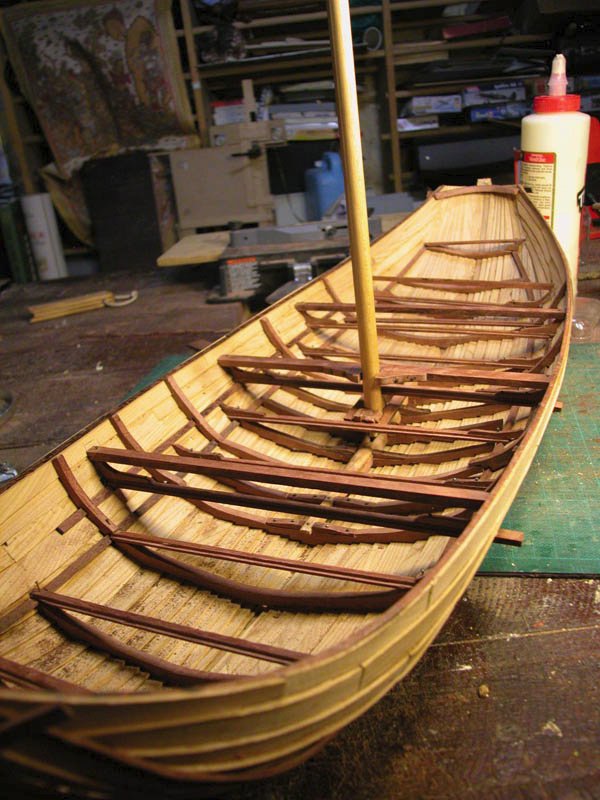

Cheerio
Dick
- Louie da fly, oneslim, GrandpaPhil and 5 others
-
 6
6
-
 2
2
-
On 3/26/2021 at 12:59 AM, bolin said:
Seeing your keelson makes me wonder if I should reconsider how I plan to do it in my long ship. Beautiful work.
I cant tell from available information if the keelson/mast-step was preserved in the wreck of Helga Holm. If not then the reconstruction keelson has similarities to the skuldelev wrecks:
I would think that a chap of your skill would make short work of carving one from a nice piece of scandinavian wood
Cheers
Dick
-
Yes, indeed, Steven. Following along the nordic theme. Here is the central part of the varmint framed loosely based on Skuldelev 1. The framing is providing some much needed stiffening to the hull but I suspect that the hull would have "worked' a fair bit in a heavy sea. Note that three of the beams are through beams. These through beams are seen on many of the hulc seals.
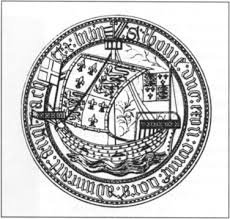
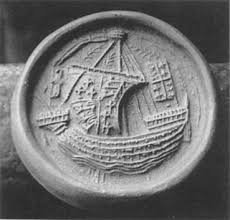
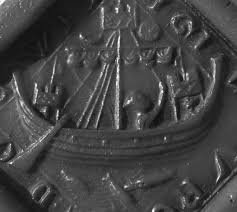
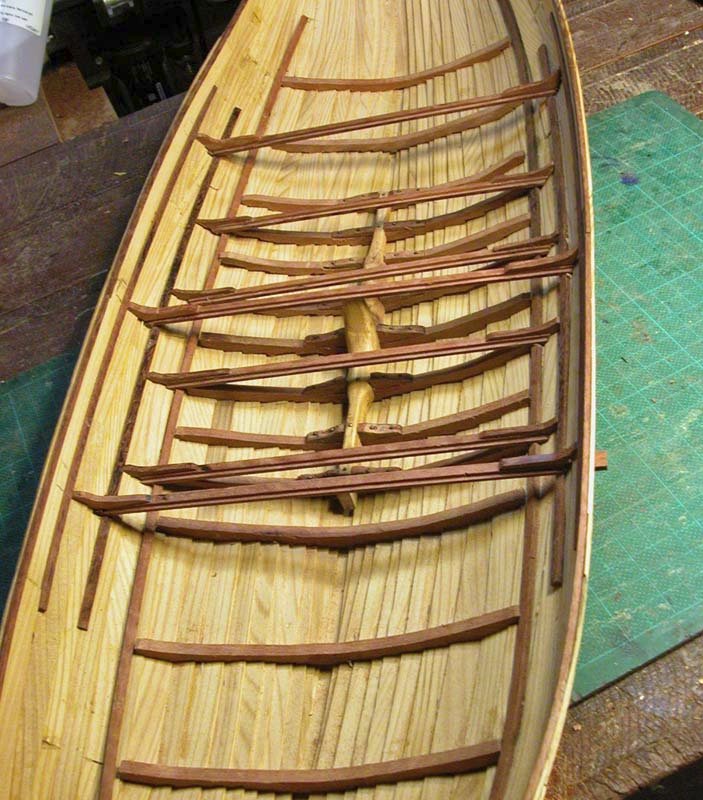

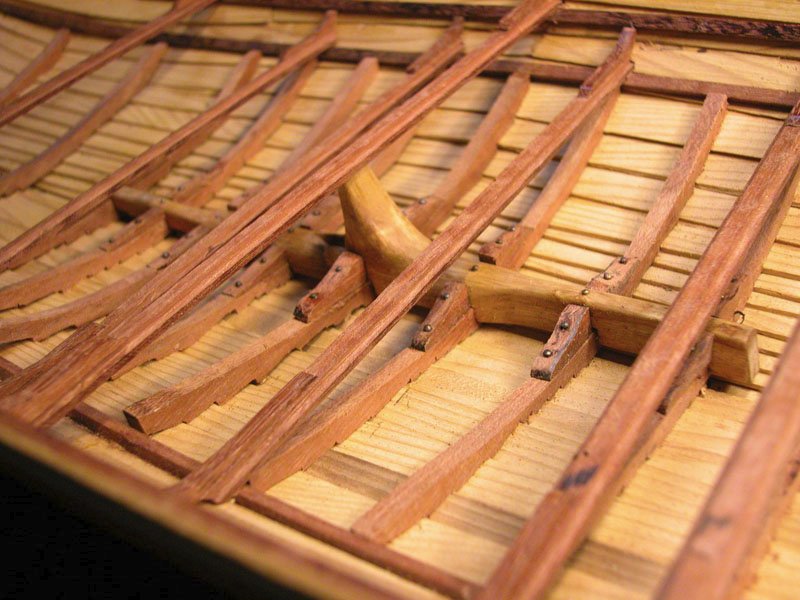
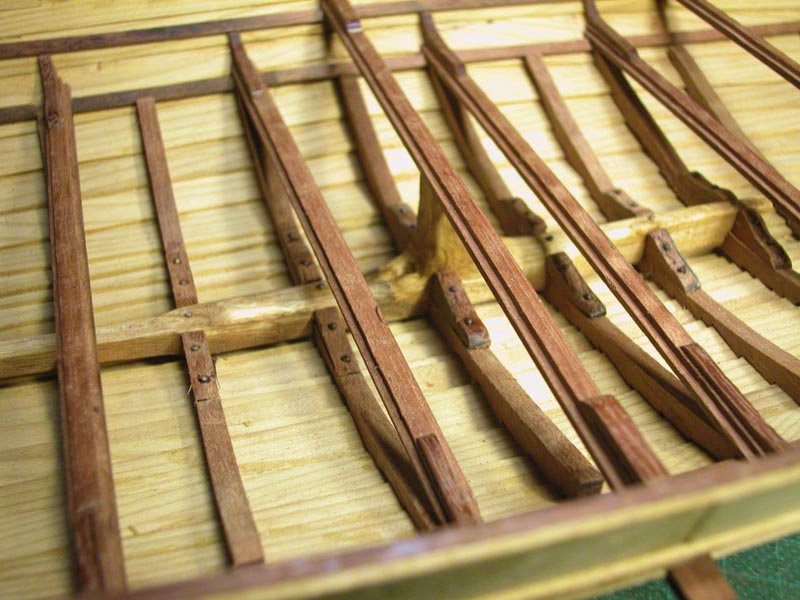
Cheers
Dick
-
On 3/20/2021 at 7:34 AM, Louie da fly said:
What kind of wood is that? It looks like it might be off a fruit tree.
I don't know. There are no fruit trees in the park but a range of native australian trees. The canine collector did not tell me from which tree it derived.
Dick and Maggie🐕
-
-
-
4 hours ago, Louie da fly said:
All us sandgropers had woggles
Didn't know you were a sandgroper ( a fond term for native-born west australians).
Yes Chuck, I will make stocks as well as 4 more anchors which will be tied down on the stocks on the foredeck, ready for use.
Dick
- Chuck Seiler and mtaylor
-
 2
2
-
-
Thanks John , Steven and Schrader. Most kind.
I have made the lateen yard using timber found in the local park. I was inspired by photographs of dhows which show that yards were not perfect machine turned bits of wood but somewhat rough and irregular. I suspect this was the case for this boat.
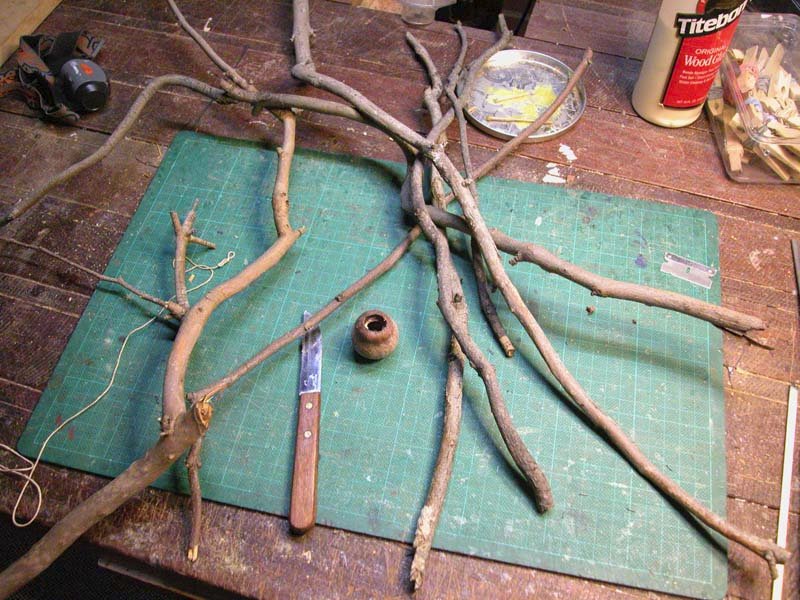
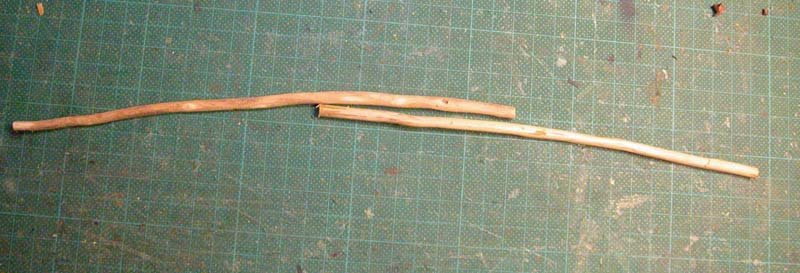


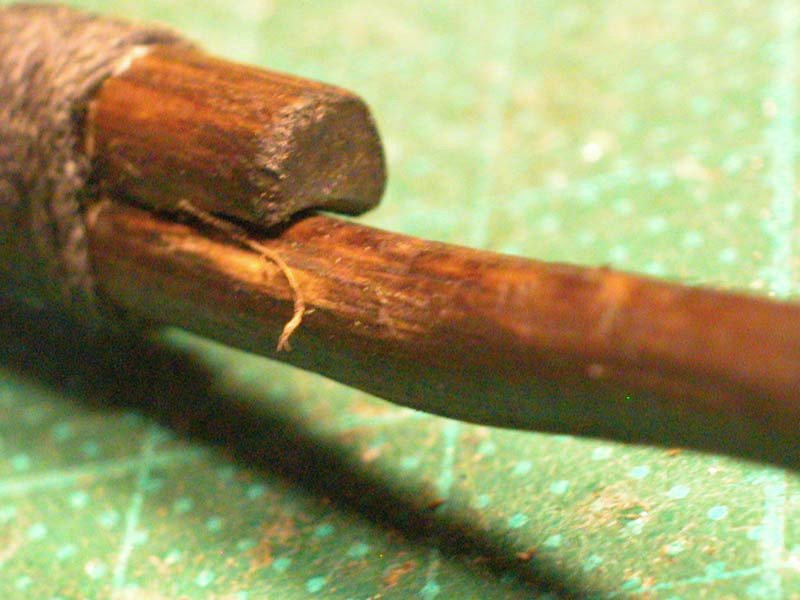
cheerio
Dick
-
Here is the first anchor. Based on the anchor found in the 7th century YassiAda wreck

and after blackening
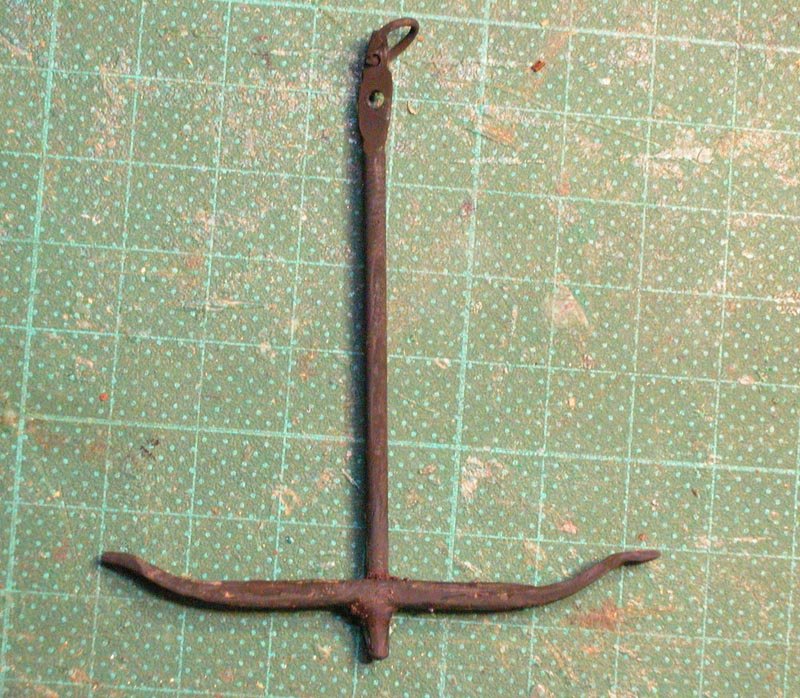
Cheers
Dick
- Richard Braithwaite, vaddoc, Archi and 9 others
-
 12
12
-
On 2/12/2021 at 10:46 PM, woodrat said:
I have decided to avoid sheaved pulleys.
As justification for this , a bas relief from Portus Augusti in Ostia second century CE. Which indicates sheaveless pulleys on the forestay and hearts on the shrouds. Note the scuppers beneath each shroud with a rope suggesting that the shroud was looped through the scupper. I have included this on Yenikapi 12 model.
-
The mast did not seem to have sufficient lateral support in the absence of mast partners. So I saw a solution to this as used in certain arab dhows and have incorporated it. It also simplifies to process of stepping and unstepping the mast.
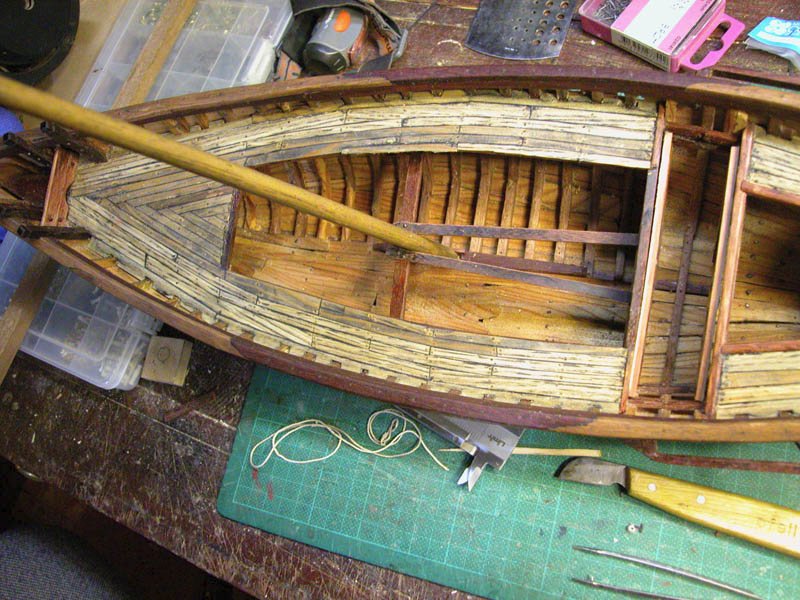
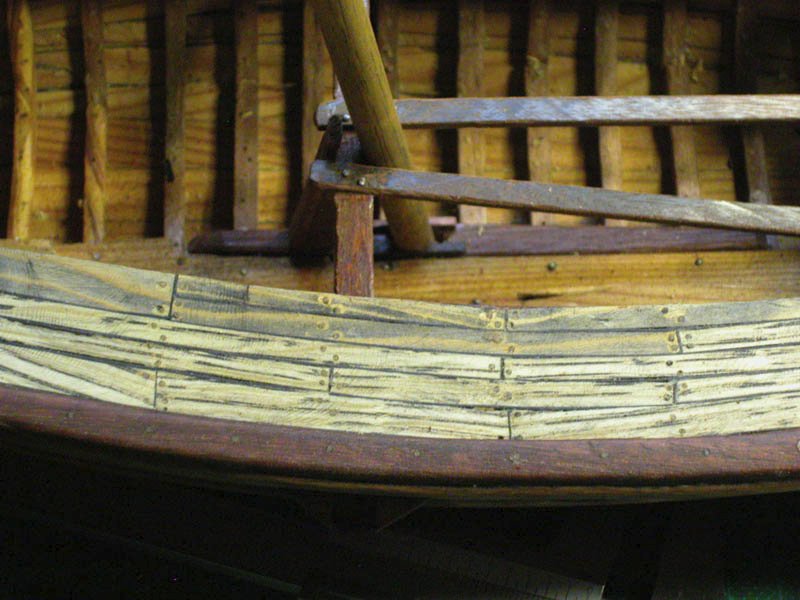

here is the lower halyard block. I have decided to avoid sheaved pulleys.
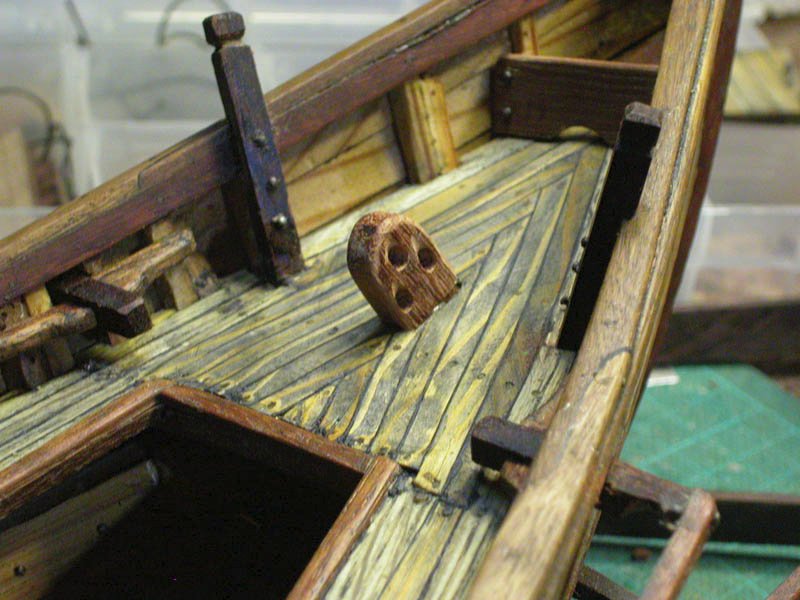
Dick
-
Thanks, Kriswood. Nothing helps, it's just a headache that wont go away. What we call this beast is perhaps less important than seeing if this keelless banana boat is at all feasible as a practical sea-boat. There is certainly no physical convincing evidence for them in the archaeological record (see early posts for all the craziness). Using reverse clinker certainly can produce a hull but would it sail as well as an old shoe? I don't have the computer skills to put the hull into a nautical design programme, but maybe someone out there in MSW Land could do this.
Cheers
Dick
- mtaylor, KrisWood and GrandpaPhil
-
 3
3
-

I have here a model of a hulc, boys and girls. An ordinary mediaeval transport. I now wish to plot the internal profile of the specimen. Can you get the camera on it? Observe.. I now clamp the ship to the uprights of the experimental apparatus and support its inferior surface. Why do I do this? Because the hull is weak and cannot resist torsional or laterally directed force. What allows me to draw this profile, boys and girls? It is physics! The tip of the probe exerts a force equal to a glass and a half of full cream dairy milk AND the support under the hull exerts an equal and opposite force. So, Mr Newton is happy!
(my apologies to those who have never heard of the late great Julius Sumner-Miller. It's your loss)
Cheers
Professor Woodrat
- Rick01, GrandpaPhil and mtaylor
-
 1
1
-
 2
2
-
-
Thanks John and Steven. Louie da Fly complimenting the boat on filthiness is praise indeed. "Straight from rubbish tip to you..."
The main problem now is where to place the lower halyard block. The only place I can see that it could go is on the after deck behind the steersman. To back this up I have this 9th century turkish illustration showing the halyard going toward this position. It also shows the "hockey stick" well. And if I'm not mistaken, it also shows a triangular wing on the starboard quarter.
And this 7th century graffito shows even more detail" It also backs my interpretation of the hockey stick calcet.
Cheerio
Dick
- mtaylor, GrandpaPhil and J11
-
 3
3
-
The decking is in place and I have filthied it up a treat. I think it looks like a working boat now. Little to do now but rig it.

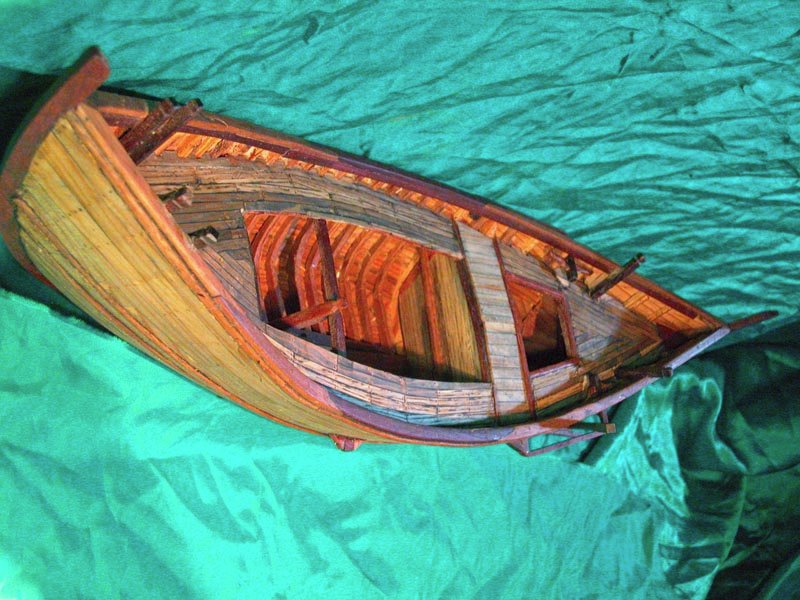
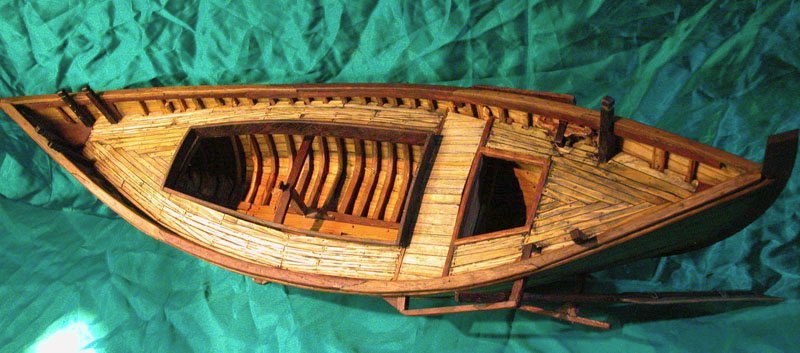
Cheerio
Dick
- GrandpaPhil, BLACK VIKING, J11 and 2 others
-
 5
5
-
The first picture is a flat cross section symmetrical rudder on the ancient mediterranean pattern and the second is a foil cross-section assymmetrical rudder of the 13th century ( on my round ship)

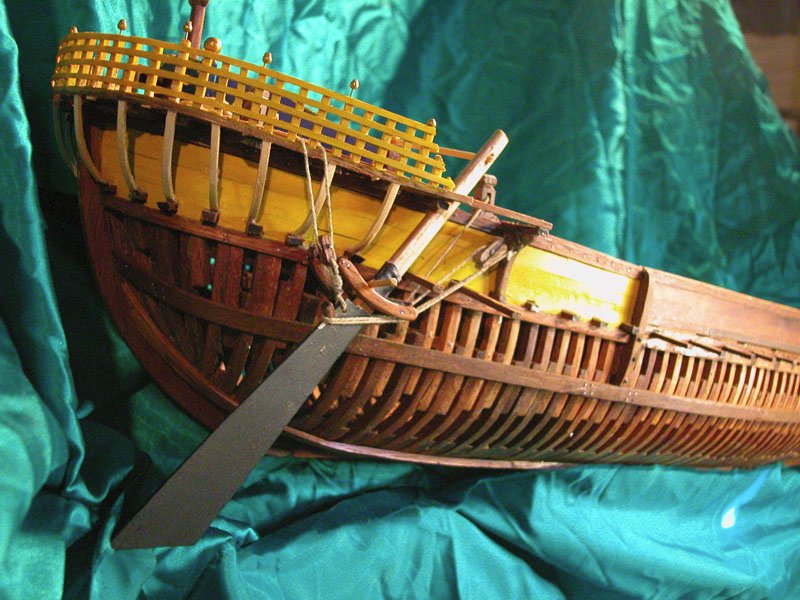
Dick
- Louie da fly, GrandpaPhil, mtaylor and 2 others
-
 4
4
-
 1
1
-
-
Thanks Steven, great picturres as usual. Here is a picture to show the course of the halyard.
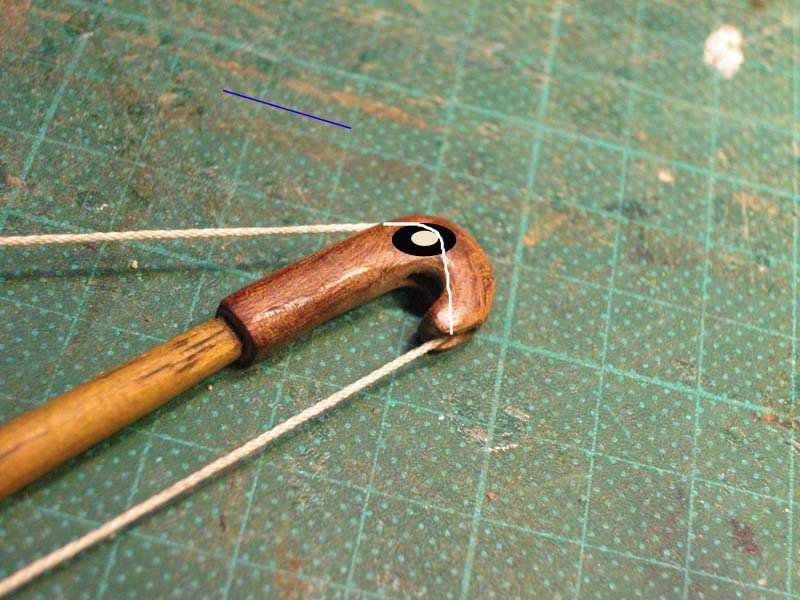
Dick
- GrandpaPhil, Louie da fly, mtaylor and 1 other
-
 4
4
-
4 hours ago, Louie da fly said:
Is there any contact between the halyard and the inside of the curved hole, or does it run completely free?
The way I have done it, the only contact the halyard has is with the pulley and the peg at the tip of the hockey stick. The channel in which it travels is straight. Otherwise the halyard would wear out rapidly. Maybe a second pulley or rotating peg at the tip ?? Still thinking.

Dick
-
Louie da Fly will like this. I have come up with a possible explanation for the strange "hockey stick" structure at the top of masts of byzantine and venetian vessels. It is a pulley for the halyard but, after going through the pulley, the halyard is conducted forward to the tip of the hockey stick so as to pull the yard away from the mast. This makes it easier to raise and lower the yard.
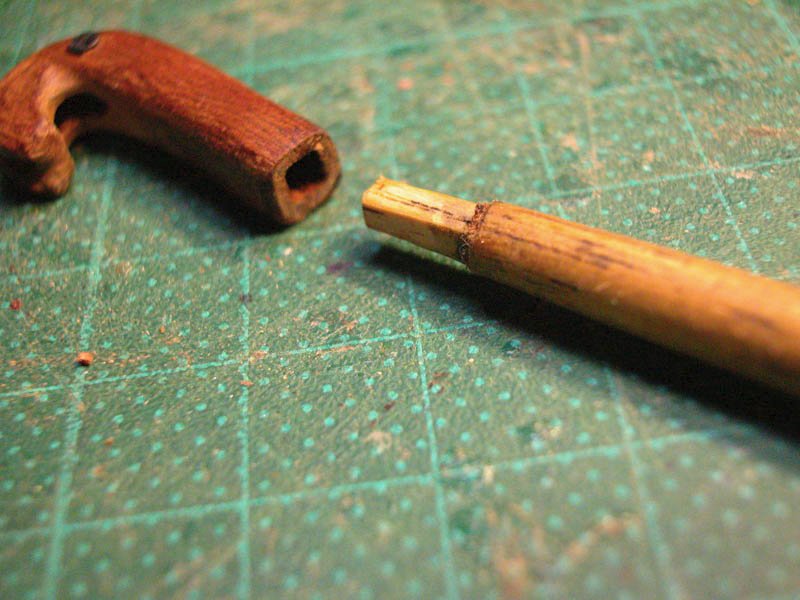
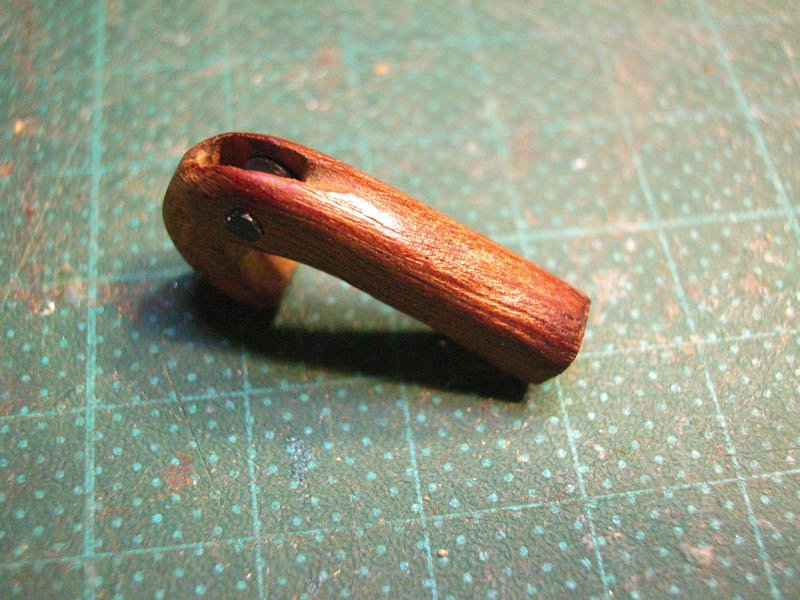
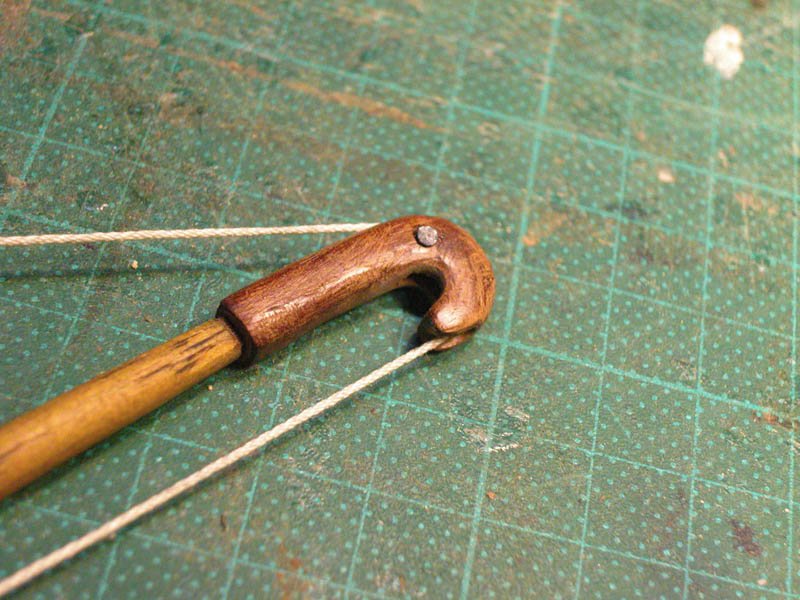

This shows the mast in its step and lashed temporarily to the throughbeam and its stanchion.
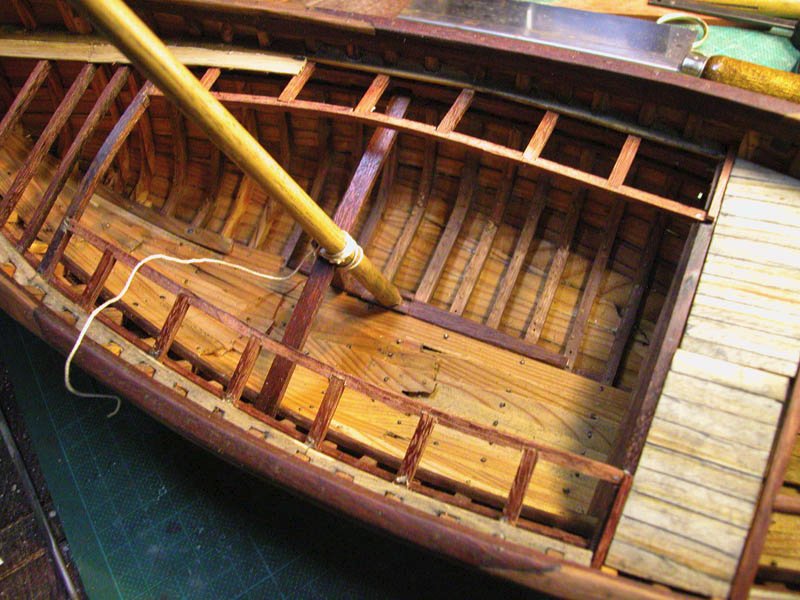
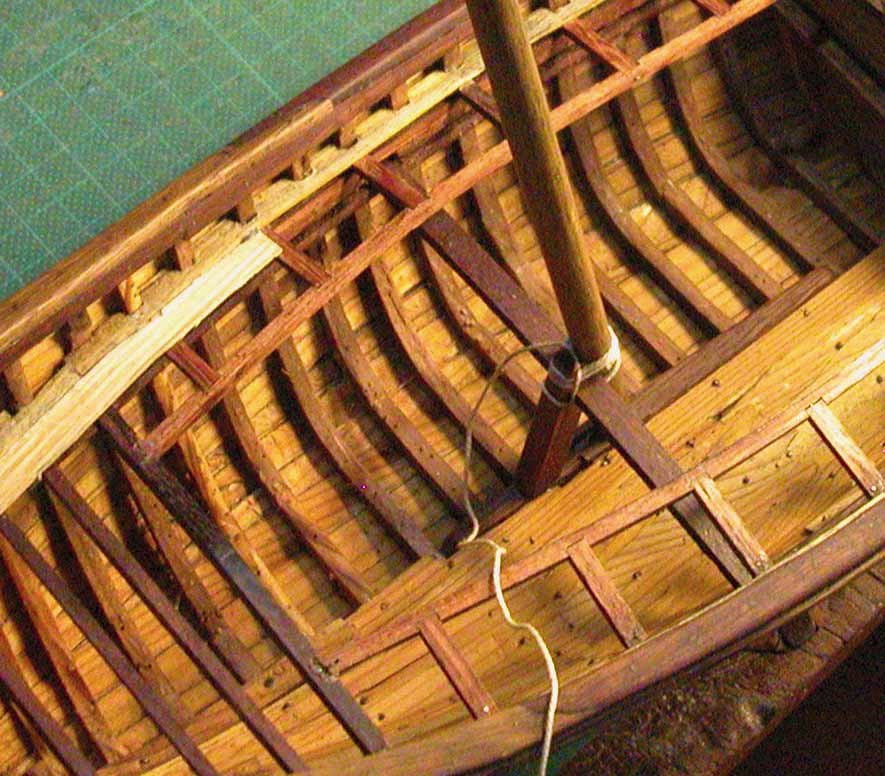
Cheers
Dick
-
Having made the shell, the question was: what type of framing? As this putative varmint was known to predate (and postdate) the cog and to derive from the low countries, it was thought safe to position it close to the nordic tradition. So, I have decided to base the framing and decks on the known wrecks the Suldelev 1 and 3. The Skuldelev 1 was a deep sea trader or knarr (knørr?) and was quite wide. It was a sea-going vessel and a reconstruction sailed around the world. It also was deep enough to transport horses (as seen in the Bayeux tapestry.
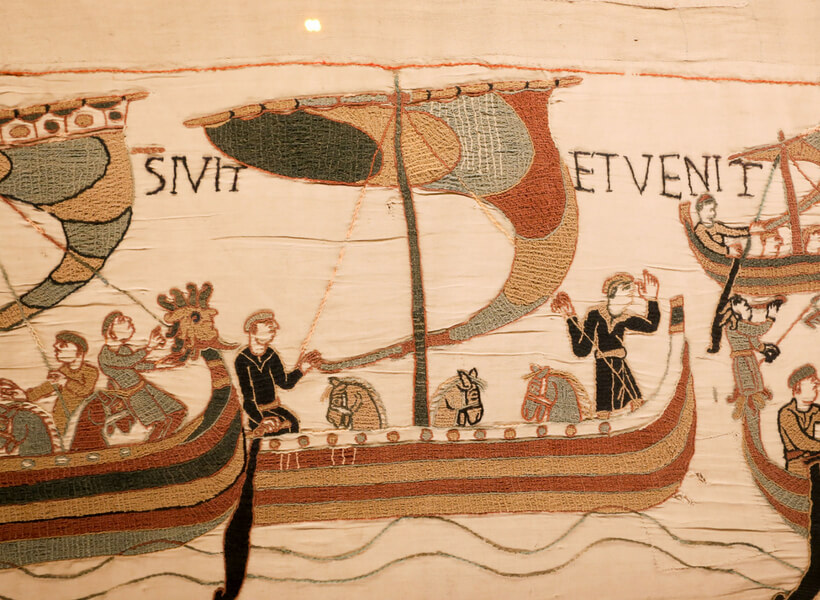
This was judged to be a suitable model for the frumious varmint.
So, how to make the floors. I presume these were made by eye and shaped to fit the clinker flooring. In order to do this I adapted and modified an analog plotter which I made to take lines of a half hull for my carrack.
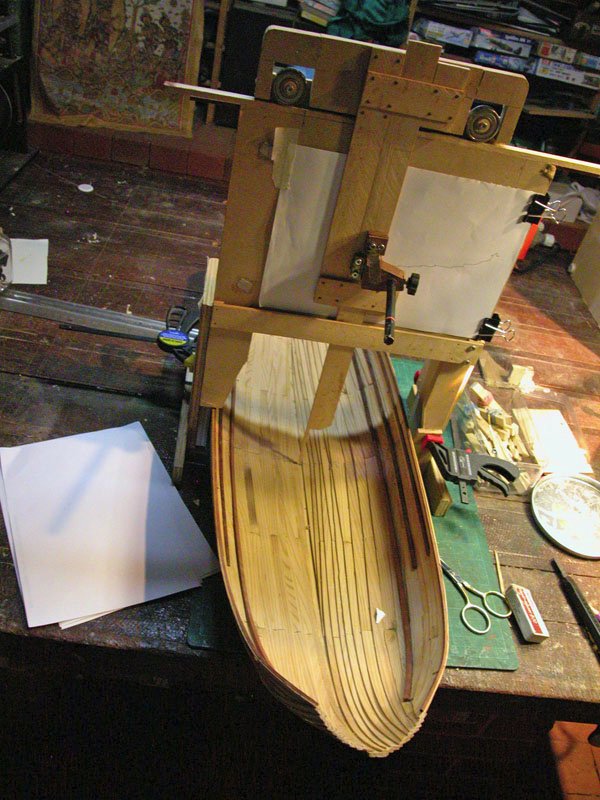
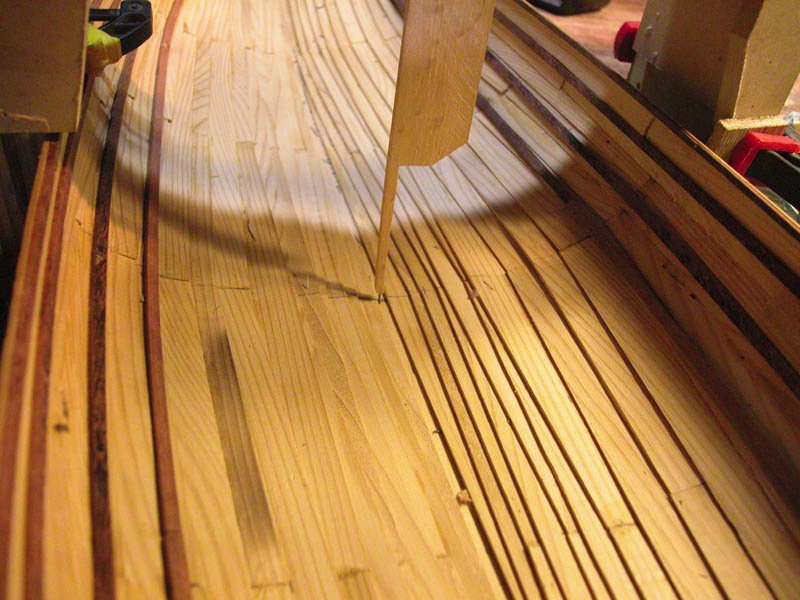
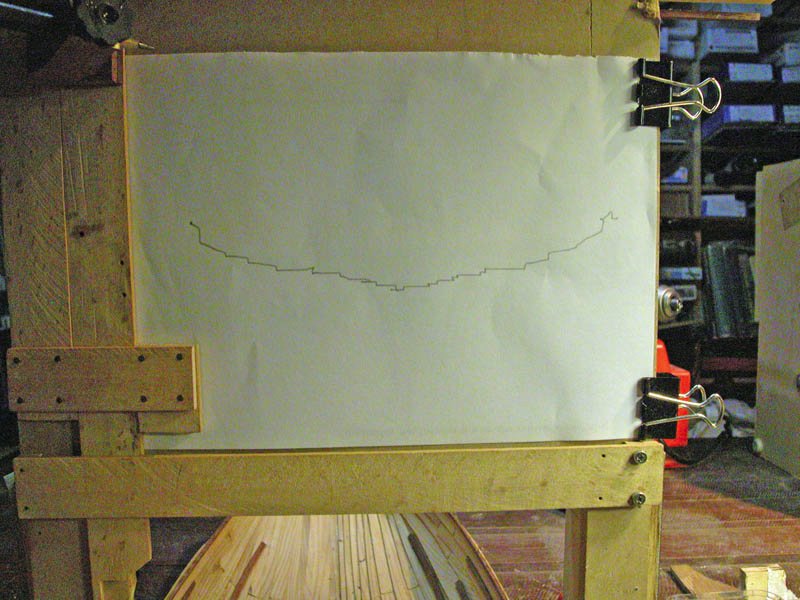
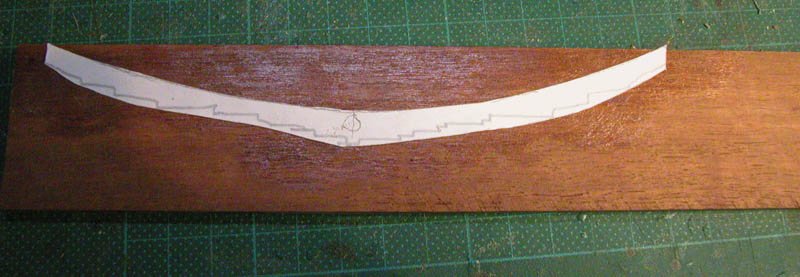
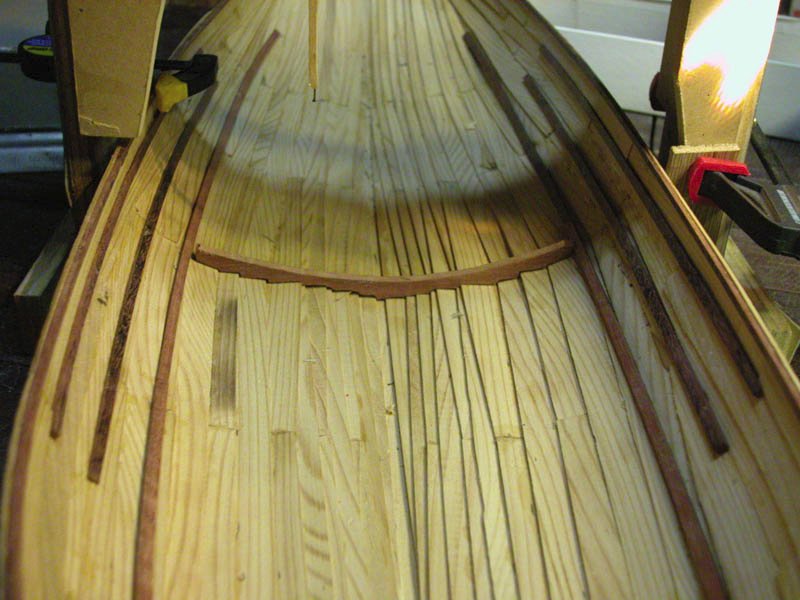 first attempt.
first attempt.
This barge is going to hold a lot of bread!
Cheers
Dick
- druxey, CiscoH, Louie da fly and 9 others
-
 12
12



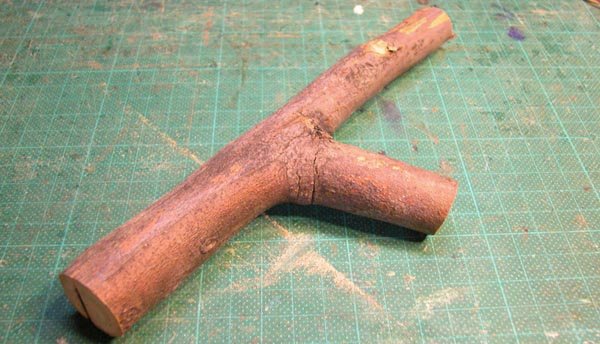
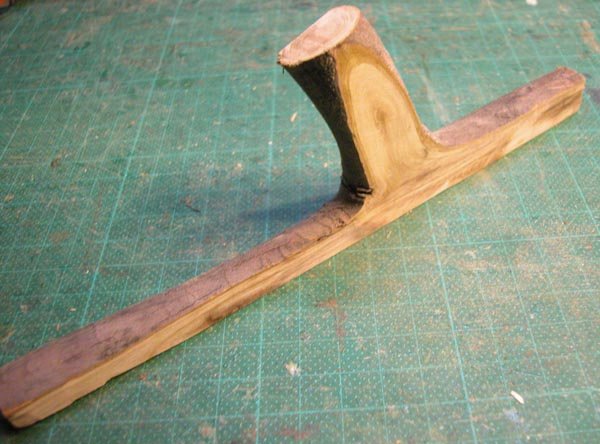
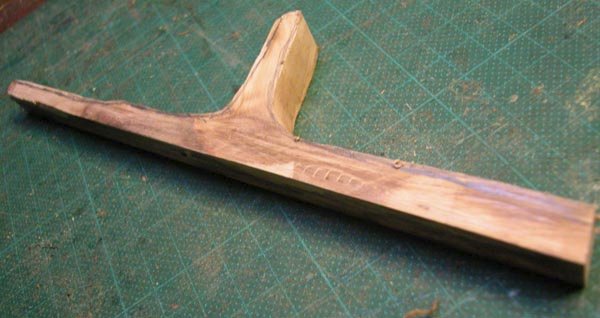
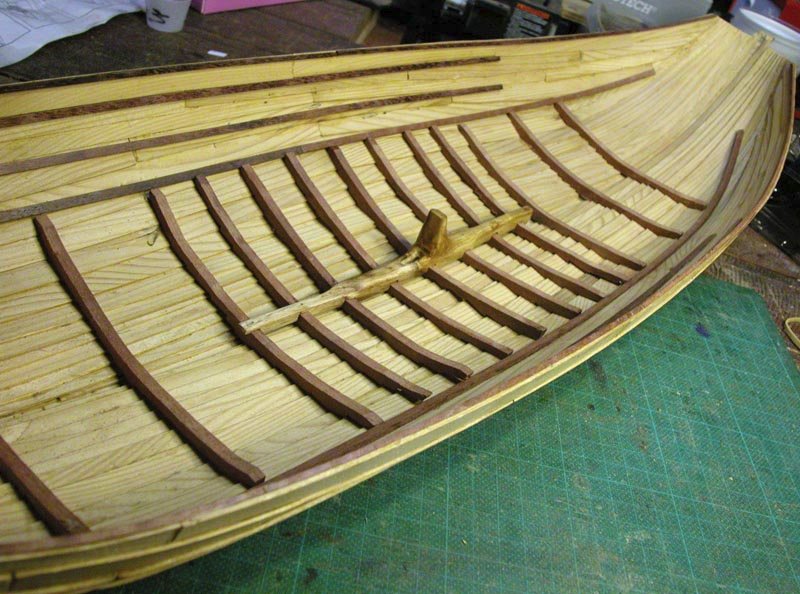
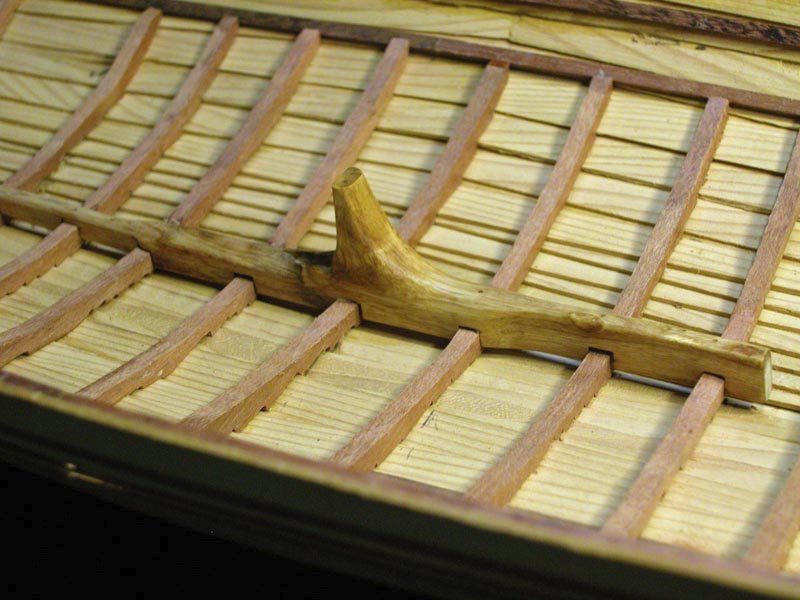
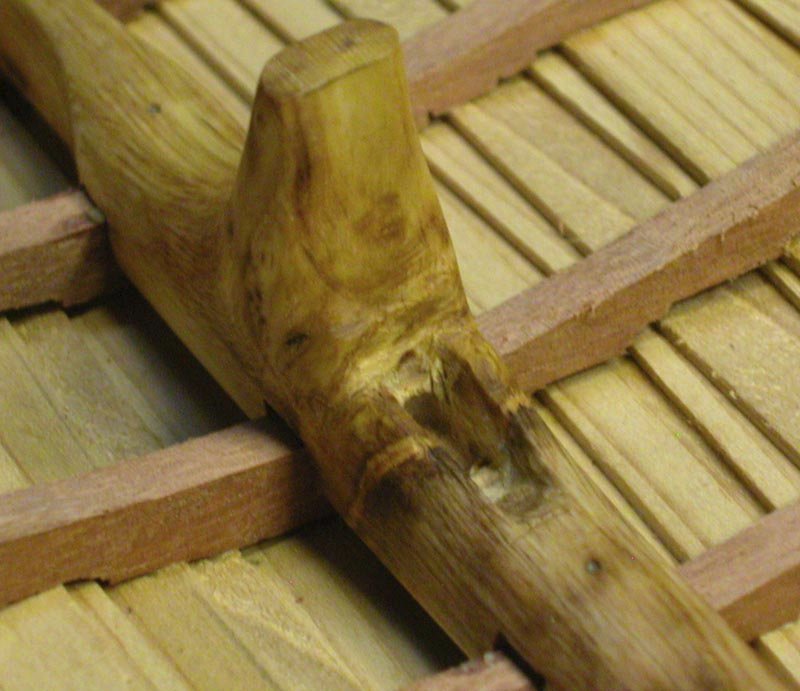
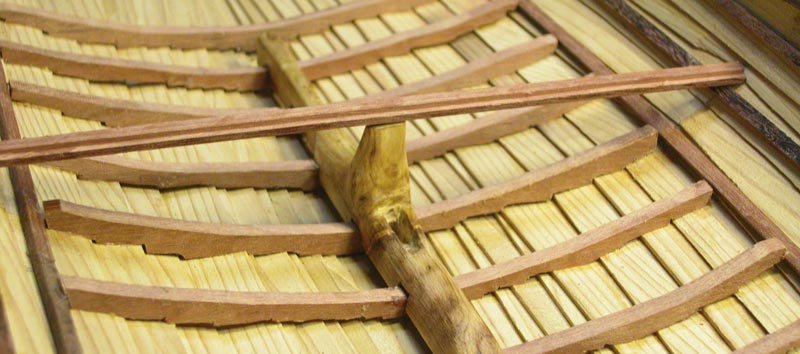
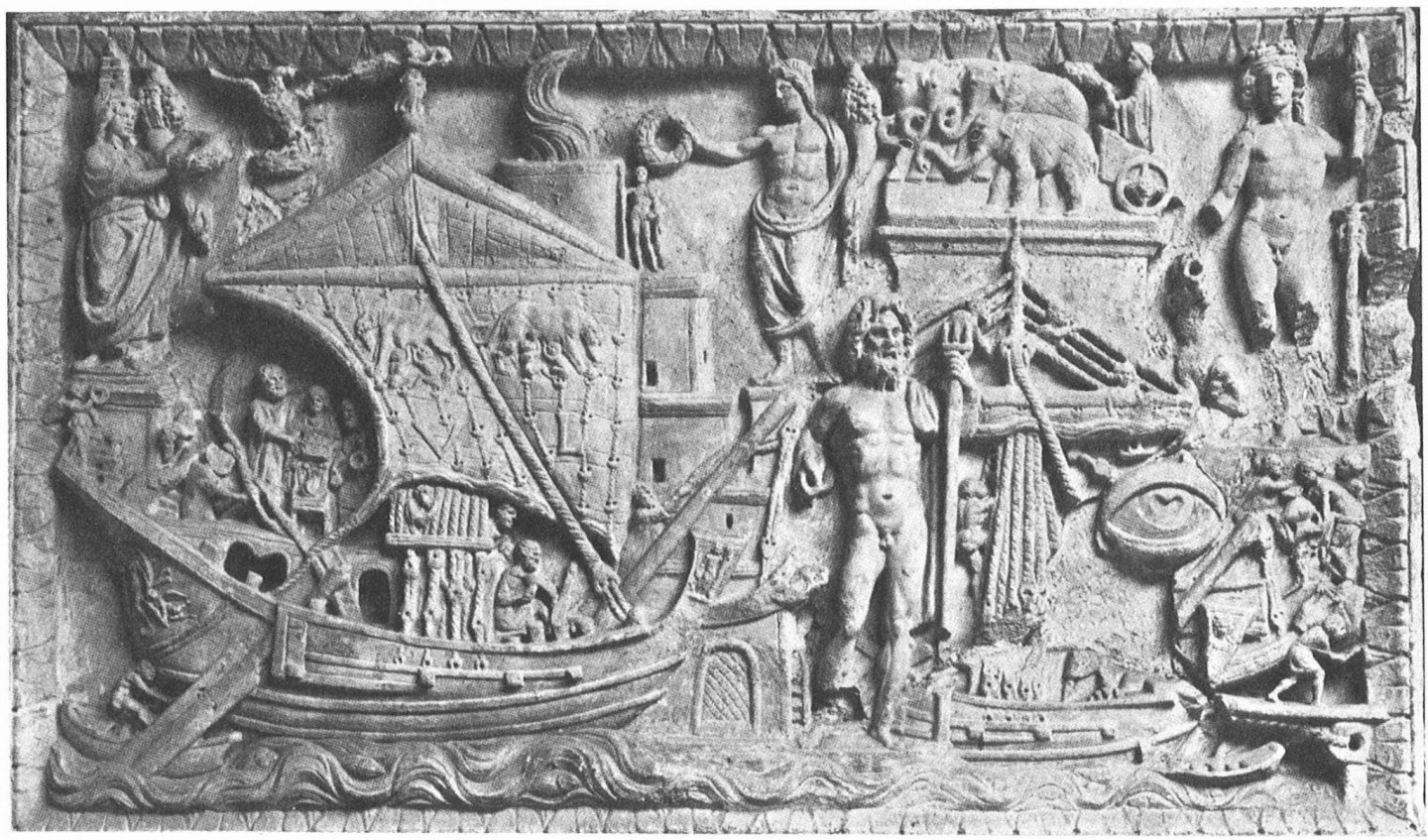
The Elusive Hulc by woodrat - FINISHED - 1:32 - plank-on-frame - a speculative reconstruction of a mediaeval merchantman
in - Subjects built Up to and including 1500 AD
Posted
Framing complete and the hull is stained to imitate the likely colour of the beast.
I hope you approve of the effect
Cheers
Dick